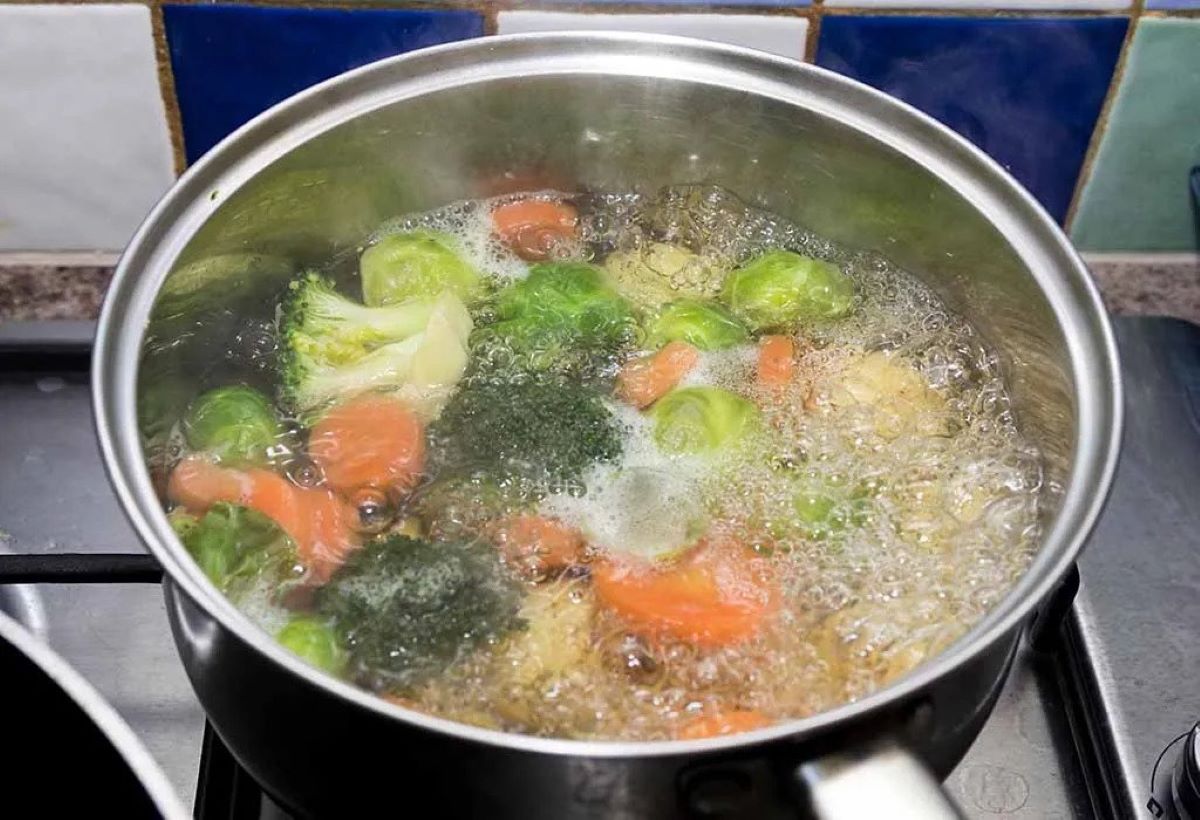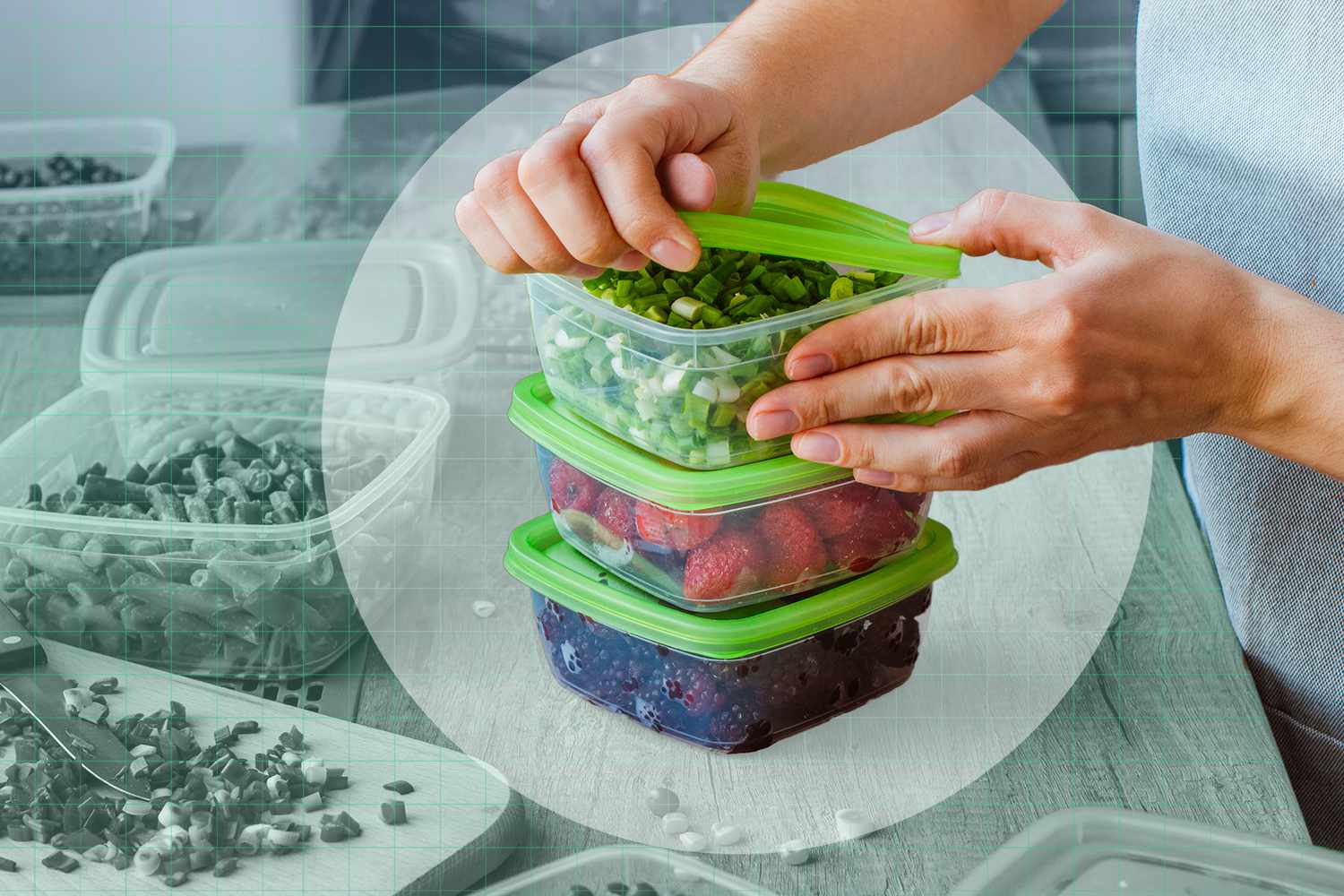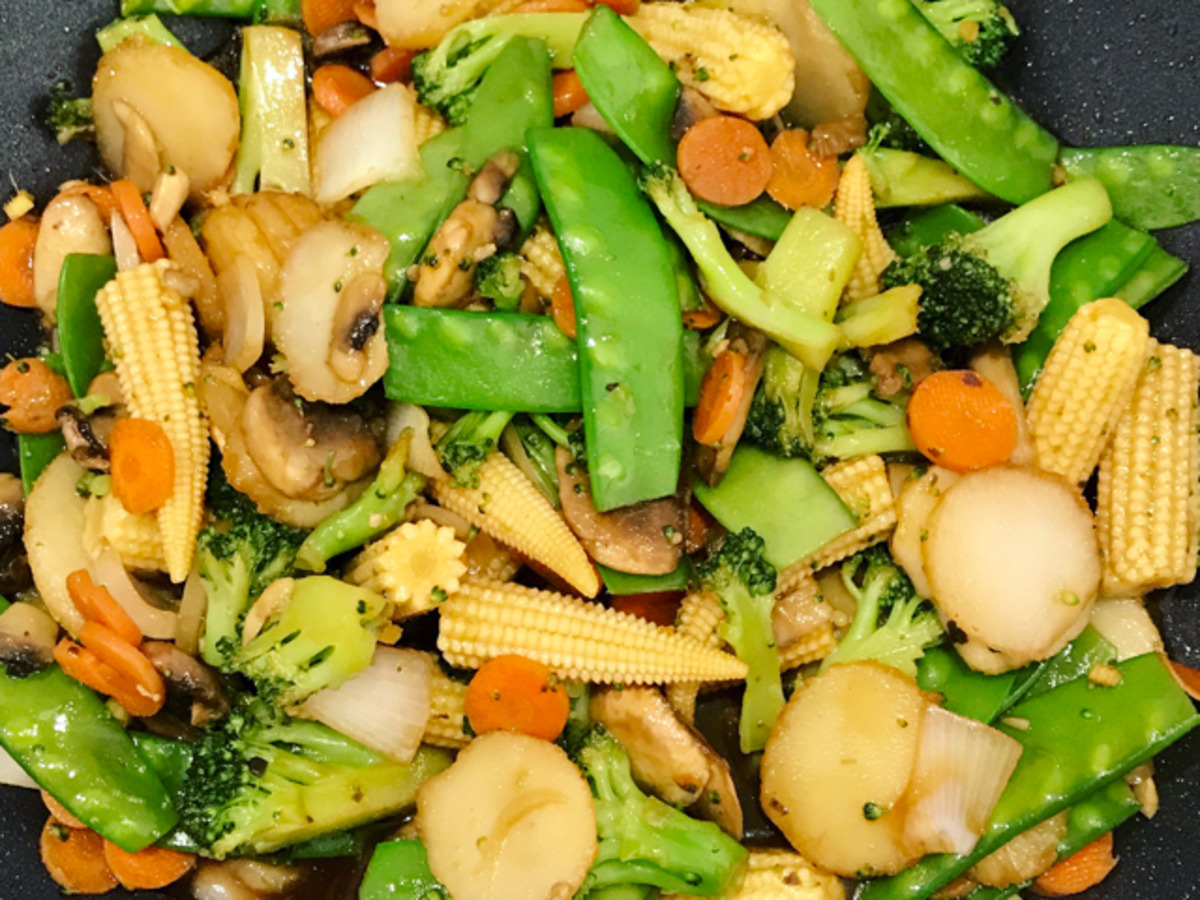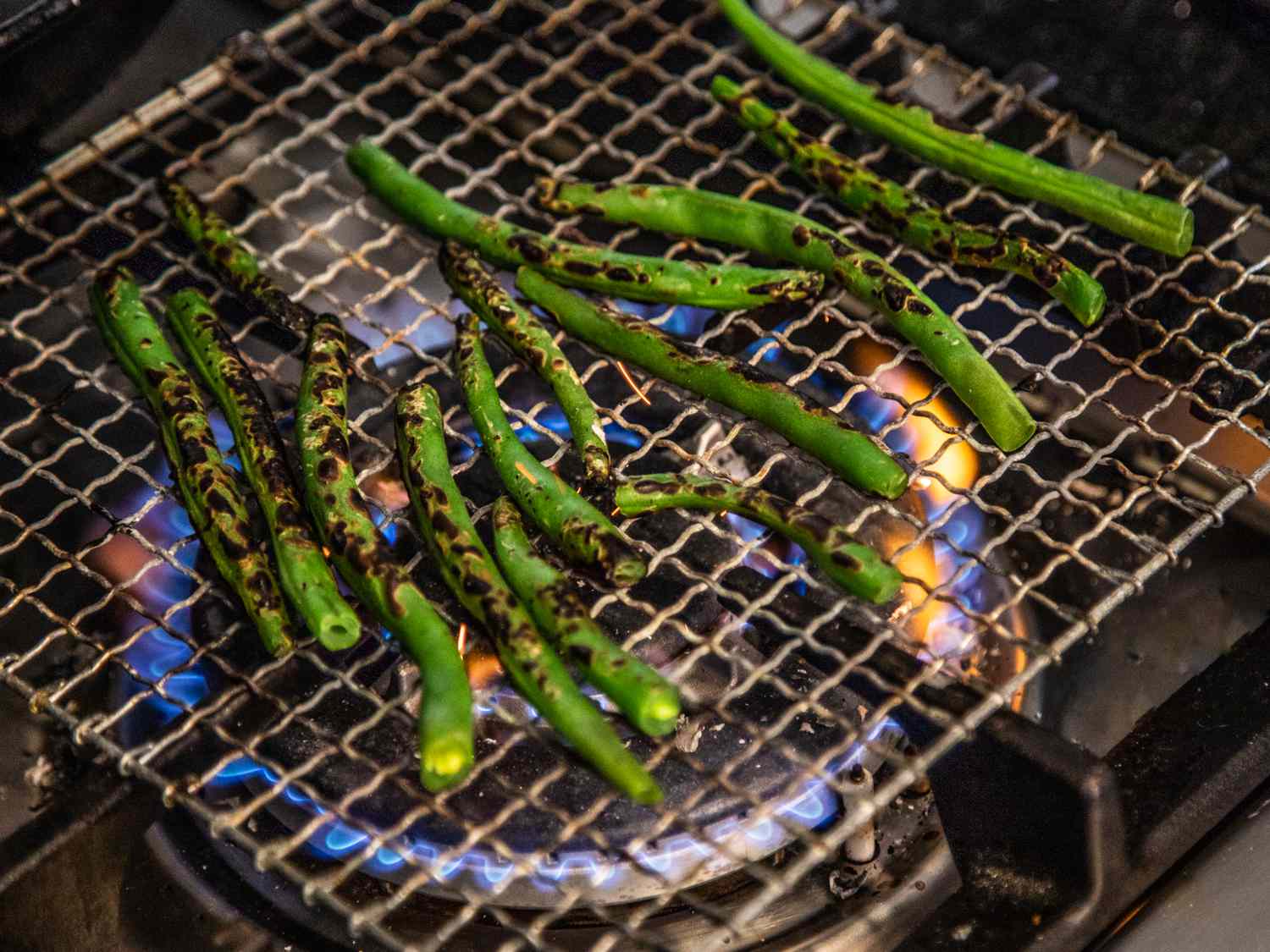Home>Gardening News and Trends>Latest News>How To Prep Vegetables
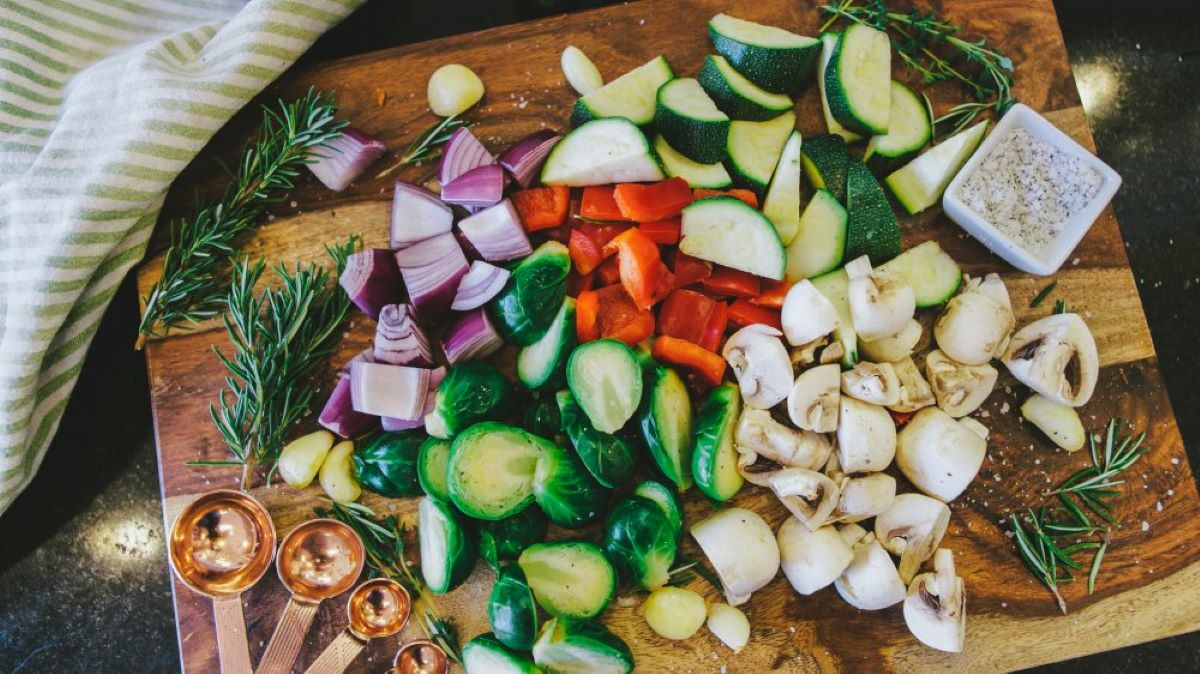

Latest News
How To Prep Vegetables
Modified: January 22, 2024
Discover the latest news on how to prep vegetables and make your meals healthier and more delicious. Learn valuable tips, techniques, and recipes for efficient vegetable preparation.
(Many of the links in this article redirect to a specific reviewed product. Your purchase of these products through affiliate links helps to generate commission for Chicagolandgardening.com, at no extra cost. Learn more)
Table of Contents
Introduction
Welcome to the world of vegetable preparation! Whether you are a seasoned cook or just starting your culinary journey, mastering the art of prepping vegetables is essential. Properly preparing vegetables not only enhances their flavor and texture but also ensures that you maximize the nutritional benefits they offer. In this article, we will explore various techniques to prep vegetables, ranging from peeling and chopping to blanching, roasting, steaming, sautéing, stir-frying, and grilling.
Preparing vegetables involves more than just washing them. It is about understanding how different cooking methods can bring out the best in each vegetable, resulting in vibrant and delicious dishes on your table. By learning the proper techniques, you can transform humble vegetables into extraordinary culinary delights.
Before diving into the specific methods of preparation, it is important to choose the freshest and highest quality vegetables. Look for vibrant colors, firm textures, and minimal blemishes or signs of wilting. Organic options are also worth considering to reduce exposure to pesticides and support sustainable farming practices.
Once you have selected your vegetables, it’s time to give them a thorough cleaning. Rinse them under cold running water, gently rubbing to remove any dirt or debris. Some vegetables, like leafy greens or root vegetables, may require a bit more attention. For leafy greens, separate the leaves and soak them in a bowl of water for a few minutes to loosen any grit. Root vegetables can be scrubbed with a vegetable brush to remove any stubborn dirt.
Now that your vegetables are clean and ready, let’s explore various methods of preparing them. Whether you prefer the crispness of blanched vegetables, the caramelized flavors of roasted veggies, or the quick and vibrant stir-fried dishes, there is a technique that suits your taste and cooking style.
Choosing and Cleaning Vegetables
Choosing the right vegetables is the first step in preparing a delicious and nutritious meal. When selecting vegetables, opt for those that are firm, vibrant in color, and free from bruises or blemishes. Fresh vegetables not only taste better, but they also retain more of their nutrients.
Seasonal vegetables are a great choice as they are often more flavorful and affordable. Additionally, buying locally sourced vegetables supports local farmers and reduces the carbon footprint associated with transportation.
When it comes to cleaning vegetables, it is important to wash them thoroughly to remove any dirt, bacteria, or pesticide residues. Start by rinsing the vegetables under cold running water, gently rubbing them to remove any surface dirt. For leafy greens, fill a bowl with water and soak them for a few minutes to allow any hidden dirt or sand to settle at the bottom. Lift the leaves from the water so that the dirt remains in the bowl, then repeat the process if necessary.
Some vegetables, such as root vegetables or those with a rough outer skin, may require additional attention. Use a vegetable brush to scrub away any dirt from the surface. This is especially important for vegetables like carrots or potatoes, where the skin is often eaten, to ensure a clean and safe eating experience.
It is worth noting that while proper cleaning is important, peeling isn’t always necessary. Many vegetables, like cucumbers, zucchini, or sweet potatoes, have edible skins that add texture and nutrients to the final dish. If you do choose to peel a vegetable, use a sharp peeler and remove only the outermost layer, as most nutrients are found just beneath the skin.
Organic vegetables are a popular choice for those concerned about pesticide exposure. Organic farming practices minimize the use of synthetic pesticides and focus on sustainable agricultural methods. However, it’s important to note that washing conventionally grown vegetables under running water can still significantly reduce pesticide residues, making them safe and healthy choices as well.
By selecting high-quality vegetables and taking the time to clean them properly, you ensure that your dishes not only taste great but also provide the maximum nutritional value. Now that your vegetables are clean and ready, it’s time to move on to the next step of prepping them for cooking.
Peeling and Chopping Vegetables
Peeling and chopping vegetables is an essential part of the prepping process. While not all vegetables require peeling, it can sometimes improve the texture and taste of the dish. Here are some guidelines for peeling and chopping vegetables:
1. Peeling: Start by washing and drying the vegetable thoroughly. If you decide to peel it, use a vegetable peeler or a sharp knife. Hold the vegetable firmly with one hand and use gentle, controlled strokes to remove the outer layer. Be cautious while peeling to avoid any unnecessary wastage of the edible portion.
Some vegetables that frequently require peeling include carrots, potatoes, and butternut squash. However, it’s worth noting that many vegetables, like cucumbers, beets, and eggplants, can be enjoyed with their skin intact. Leaving the skin on can add nutritional benefits and enhance the visual appeal of the dish.
2. Chopping: Once the vegetables are peeled (if necessary), it’s time to chop them into desired shapes and sizes. Different recipes call for different cuts, so it’s essential to familiarize yourself with some common chopping techniques:
- Dice: To dice a vegetable, start by cutting it into long, thin slices. Then, stack the slices and cut them into evenly-sized cubes. This technique is commonly used for onions, bell peppers, and potatoes.
- Julienne: Julienne involves cutting vegetables into thin, matchstick-like strips. Start by cutting the vegetable into flat, rectangular pieces. Then, stack the pieces and cut them into thin strips. This technique is often used for carrots, zucchini, and bell peppers in stir-fries or salads.
- Mince: To mince a vegetable, finely chop it into very small pieces. This technique is commonly used for garlic, ginger, or herbs, where you want to release their flavors and incorporate them evenly into the dish.
- Slice: Slicing vegetables involves cutting them into even, flat pieces. Depending on the thickness of the slices, you can create thin or thick slices. This technique is often used for tomatoes, cucumbers, or eggplants.
Remember, the size and shape of the chop can impact both the cooking time and the visual appeal of the final dish. Consider the recipe you are preparing and adjust your chopping technique accordingly.
By peeling and chopping vegetables with care and precision, you not only create a uniform and aesthetically pleasing dish but also ensure that they cook evenly. Now that the vegetables are ready, let’s explore different cooking techniques to elevate their flavors and textures.
Blanching Vegetables
Blanching is a cooking technique that involves briefly immersing vegetables in boiling water, followed by an immediate plunge into ice water to halt the cooking process. This method is often used to preserve the vibrant color and crispness of vegetables, making them perfect for salads, stir-fries, or as a side dish.
To blanch vegetables, follow these steps:
- Preparation: Start by washing and trimming your vegetables. If necessary, peel or remove any tough outer layers. Cut them into uniform-sized pieces for even cooking.
- Boiling Water: In a large pot, bring water to a vigorous boil. Add a generous amount of salt to the water to enhance the vegetable’s flavor. The general rule of thumb is to use about 1 tablespoon of salt per 4 cups of water.
- Blanching: Carefully add the vegetables to the boiling water. Make sure not to overcrowd the pot, as this can result in uneven cooking. Depending on the vegetable, blanching can take anywhere from 1 to 4 minutes. Keep a close eye on the texture of the vegetables, as you want them to be tender but still crisp.
- Ice Bath: Once the blanching time is up, quickly remove the vegetables from the boiling water using a slotted spoon or tongs, and transfer them immediately to a bowl filled with ice water. The ice water will rapidly cool down the vegetables and stop the cooking process. Let them sit in the ice water for a few minutes until they are completely cooled.
- Drain and Pat Dry: Once the vegetables have cooled, remove them from the ice water bath and drain them well. You can gently pat them dry with a clean kitchen towel or paper towels.
Blanched vegetables can be enjoyed as is, or they can be further cooked or incorporated into various recipes. They retain their vibrant color, crisp texture, and most importantly, their nutritional value.
Blanching works well for vegetables like broccoli, green beans, asparagus, or spinach. It not only enhances their appearance but also helps to maintain their vitamins, minerals, and phytonutrients. By blanching your vegetables, you can achieve a perfect balance of bright, crisp, and tender textures in your dishes.
Now that you know how to blanch vegetables, you can explore recipes that highlight the beautifully blanched vegetables, creating colorful and flavorful dishes to delight your taste buds.
Roasting Vegetables
Roasting vegetables is a popular cooking method that brings out their natural sweetness and creates a delicious caramelized flavor. This technique not only enhances the taste but also gives vegetables a wonderful texture—crispy on the outside and tender on the inside. Roasted vegetables are versatile and can be enjoyed as a side dish, tossed into salads, or used as a flavorful topping for pizzas or grain bowls.
To roast vegetables, follow these steps:
- Preparation: Start by preheating your oven to the desired temperature. Most vegetables roast well between 400°F (200°C) and 450°F (230°C). While the oven is heating up, prepare your vegetables by washing, peeling (if necessary), and cutting them into evenly sized pieces. This ensures even cooking.
- Tossing: Place the cut vegetables in a large bowl. Drizzle them with olive oil, sprinkle with salt, pepper, and any desired herbs or spices. Toss the vegetables well to ensure even coating.
- Roasting: Spread the vegetables in an even layer on a baking sheet or roasting pan. Make sure they are not overcrowded to allow proper browning. Place the pan in the preheated oven and roast for about 20-30 minutes, depending on the size and density of the vegetables. Stir or flip them halfway through cooking to ensure they brown evenly.
- Checking for Doneness: After the initial roasting time, check for doneness by poking the vegetables with a fork. They should be tender but not overly soft. If needed, continue roasting for a few more minutes until they reach the desired level of crispness.
- Serving: Once roasted, remove the vegetables from the oven and let them cool slightly before serving. They can be enjoyed immediately or incorporated into various recipes.
Roasting works well for a wide variety of vegetables, such as potatoes, carrots, cauliflower, Brussels sprouts, and butternut squash. It intensifies their flavors and creates a beautiful caramelized exterior while preserving their natural nutritional value.
Experiment with different combinations of vegetables and herbs or spices to create unique flavor profiles. For example, try adding garlic and rosemary to roasted potatoes, or balsamic vinegar and honey to roasted Brussels sprouts. The possibilities are endless!
Roasting vegetables is a simple and delicious way to elevate their taste and texture. So, preheat your oven, grab your favorite veggies, and get ready to enjoy a warm and flavorful roasted vegetable feast!
Steaming Vegetables
Steaming vegetables is a gentle and healthy cooking method that helps to retain their natural flavors, textures, and nutrients. Steamed vegetables maintain their vibrant colors, and the process helps to preserve the crispness and tenderness of the produce. Steaming is a versatile cooking technique that can be used for a wide range of vegetables, and it is perfect for those who prefer a lighter and more delicate taste.
Here’s how to steam vegetables:
- Preparation: Begin by washing and preparing your vegetables. Trim, peel, and cut them into uniform-sized pieces to ensure even cooking.
- Equipment: Prepare a steamer basket or a steaming rack placed inside a pot. If you don’t have a steamer basket, you can use a metal colander or even improvise with a heatproof dish and a lid. The goal is to keep the vegetables out of direct contact with the water while allowing the steam to circulate and cook them evenly.
- Water: Pour about an inch of water into your pot and bring it to a gentle simmer. The water should not touch the bottom of the steamer basket. Too much water can result in boiling rather than steaming the vegetables.
- Steaming: Carefully place the vegetables in the steamer basket or on the rack, making sure they are arranged in a single layer. This allows the steam to circulate freely. Place a lid on the pot to trap the steam and cook the vegetables effectively.
- Cooking Time: The cooking time will vary depending on the type and size of the vegetables. Generally, steam the vegetables for 5-10 minutes. Keep a close eye on them and check for doneness by poking with a fork. They should be tender but still have a slight crunch.
- Seasoning: Once the vegetables are steamed, you can season them with a sprinkle of salt, pepper, or even a drizzle of lemon juice or olive oil for added flavor. However, steamed vegetables have a natural sweetness and delicate taste, so be mindful not to overpower them with heavy seasonings or sauces.
Steaming vegetables preserves their nutrients, as they are not exposed to excessive heat or prolonged cooking times. It also helps to maintain their vibrant colors, ensuring that they look as appealing as they taste. Steamed vegetables can be enjoyed as a side dish, added to soups or stir-fries, or used as a nutritious topping for grain bowls.
Overall, steaming is a healthy and convenient method to prepare vegetables. It’s a wonderful way to showcase their natural flavors and textures while providing a light and satisfying meal.
Sautéing Vegetables
Sautéing is a versatile and quick cooking method that involves cooking vegetables in a small amount of oil or fat over high heat. This technique allows vegetables to retain their texture and flavors while developing a delicious caramelized exterior. Sautéed vegetables are perfect as a side dish, can be added to pasta or grain dishes, or even used as a filling for sandwiches and wraps.
To sauté vegetables, follow these steps:
- Preparation: Begin by washing and preparing your vegetables. Chop or slice them into even-sized pieces to ensure uniform cooking.
- Pan and Heat: Choose a wide and shallow pan or skillet that provides enough space for the vegetables to spread out. Heat the pan over medium-high heat and add a small amount of oil or fat, such as olive oil, butter, or coconut oil.
- Add Vegetables: Once the oil or fat is hot and shimmering, add the vegetables to the pan. It’s essential to avoid overcrowding the pan, as this can cause the vegetables to steam instead of sauté. Work in batches if needed.
- Sauté: Stir and toss the vegetables frequently to ensure even cooking and prevent them from sticking to the pan. Sauté them for a few minutes until they are tender yet still slightly crisp. Depending on the type and size of the vegetables, cooking times may vary.
- Seasoning: Season the sautéed vegetables with salt, pepper, and any desired herbs or spices. Feel free to add minced garlic, onions, or chili flakes for extra flavor. Toss the vegetables to distribute the seasonings evenly.
- Serving: Once the vegetables are cooked to your preferred level of tenderness, remove them from the heat. Serve them immediately as a side dish or use them in various recipes.
Sautéing works well for a wide array of vegetables, including bell peppers, mushrooms, zucchini, spinach, and onions. The high heat and quick cooking method help to retain their natural color, texture, and flavor.
Experiment with different combinations of vegetables and seasonings to create a variety of sautéed dishes. For example, try sautéing bell peppers with onions and garlic for fajitas, or mix mushrooms, zucchini, and cherry tomatoes for a flavorful pasta topping.
Sautéed vegetables are a delicious and satisfying way to enjoy the natural flavors of vegetables. The combination of caramelization and tenderness adds depth and richness to your meals, providing a tasty complement to any main course.
Stir-Frying Vegetables
Stir-frying vegetables is a fast and flavorful cooking technique that originated in Asian cuisine. This method involves quickly cooking vegetables in a hot pan or wok with a small amount of oil over high heat. Stir-frying allows the vegetables to retain their natural crunch, vibrant colors, and distinct flavors, making it a popular choice for creating delicious and healthy dishes.
Here’s how to stir-fry vegetables:
- Preparation: Start by preparing your vegetables. Wash, trim, and cut them into bite-sized pieces. It’s important to ensure that the pieces are of similar size to promote even cooking.
- Heat the Pan: Heat a wok or a large skillet over high heat. Add oil with a high smoke point, such as vegetable or peanut oil. Swirl the oil around to coat the surface of the wok or pan evenly.
- Add Aromatics: Add aromatics like minced garlic, ginger, or shallots to the hot oil. Stir-fry them for a few seconds to release their flavors and aromas.
- Add Vegetables: Add the harder and longer-cooking vegetables, such as carrots or broccoli, to the pan first. Stir-fry them for a minute or two until they start to become tender.
- Add Softer Vegetables: Next, add the softer and quick-cooking vegetables, such as peppers or snow peas. Stir-fry them for a few more minutes until they are crisp-tender.
- Seasoning: Season the vegetables with soy sauce, oyster sauce, or your choice of stir-fry sauce. Add salt, pepper, or other spices to taste. Toss the vegetables to evenly coat them.
- Finish: Cook for another minute or two until the vegetables are cooked to your desired level of tenderness. Remember to stir continuously to prevent the vegetables from sticking or burning.
- Serving: Remove the stir-fried vegetables from the heat and transfer them to a serving dish. They can be enjoyed on their own as a side dish or served over rice, noodles, or as a filling for wraps and spring rolls.
Stir-frying is a great way to highlight the freshness and natural flavors of the vegetables. It’s a versatile cooking method that allows you to customize your dish by adding proteins like tofu, shrimp, or chicken, and incorporating various sauces and seasonings.
Experiment with different combinations of vegetables, sauces, and spices to create your own unique stir-fry recipes. Whether you prefer a classic vegetable stir-fry or want to explore fusion flavors, stir-frying vegetables is a fantastic technique that delivers satisfying and mouthwatering results.
Grilling Vegetables
Grilling vegetables is a fantastic way to infuse them with smoky flavors and create a delicious charred exterior while keeping their natural textures intact. Whether you’re firing up the barbecue or using a stovetop grill pan, grilling vegetables adds depth and complexity to their flavors, making them a perfect accompaniment to grilled meats or a standout ingredient in vegetarian dishes.
Here’s how to grill vegetables:
- Preparation: Start by washing and preparing your vegetables. Slice them into medium-thick pieces, ensuring they are large enough to prevent them from falling through the grill grates.
- Marination: Consider marinating the vegetables before grilling for extra flavor. Toss them in a marinade made with oil, vinegar, herbs, spices, and any desired seasonings. Let them sit in the marinade for at least 15 minutes, allowing the flavors to penetrate.
- Preheat the Grill: Preheat your grill or grill pan to medium-high heat. Make sure the grates are clean and lightly oil them to prevent the vegetables from sticking.
- Grill: Place the marinated vegetables on the grill, ensuring they are well-spaced and not overcrowded. Cook them for a few minutes on each side, using tongs to flip them. The grilling time will vary depending on the vegetable and its thickness. Aim to achieve grill marks and a slightly charred appearance while keeping the inside tender-crisp.
- Basting: If desired, baste the vegetables with the leftover marinade or brush them with a flavorful sauce to add more depth and moisture during grilling. This step can enhance the flavors and prevent the vegetables from drying out.
- Checking for Doneness: Check the vegetables for doneness by inserting a fork or skewer into the thickest part. They should be tender but still have a slight bite. Remove them from the grill once they reach the desired texture.
- Serving: Transfer the grilled vegetables to a serving platter and let them rest for a few minutes. You can serve them as a side dish, toss them with a vinaigrette for a refreshing salad, or use them as a delicious topping on pizzas or sandwiches.
Grilling intensifies the natural sweetness and imparts a smoky flavor to vegetables, making them a crowd-pleasing addition to any meal. Popular vegetables for grilling include bell peppers, zucchini, eggplant, corn, and asparagus, but feel free to experiment with your favorite choices.
Remember to adjust marination time and grilling temperature based on the vegetable’s density and size. Thicker and denser vegetables may benefit from slightly longer cooking times, while delicate vegetables require shorter grilling periods to prevent overcooking.
With their smoky aroma and enticing flavors, grilled vegetables are a delicious way to enjoy the bounties of the season. So, fire up your grill and savor the unique and enticing taste of grilled vegetables!
Conclusion
Mastering the art of preparing vegetables is a fundamental skill for any cook, and it opens up a world of culinary possibilities. Whether you choose to blanch, roast, steam, sauté, stir-fry, or grill vegetables, each method brings out unique flavors, textures, and visual appeal.
By choosing the freshest and highest quality vegetables, properly cleaning them, and employing the right cooking techniques, you can create dishes that are not only delicious but also packed with essential nutrients. The various methods of vegetable preparation allow you to customize the cooking process to your liking, whether you prefer crisp-tender vegetables, vibrant and crunchy bites, or deeply caramelized and smoky flavors.
Remember to experiment with different combinations of vegetables, seasonings, and cooking methods. This will allow you to discover your own favorite flavor profiles and create truly unique and satisfying dishes.
So, whether you’re blanching vegetables to preserve their vibrant colors, roasting them to enhance their natural sweetness, steaming them to maintain their crispness, sautéing them for a quick and flavorful side dish, stir-frying them to create a delightful medley of flavors, or grilling them for a smoky and charred experience, the possibilities are endless.
With practice, creativity, and a deep appreciation for the world of vegetables, you can elevate your culinary skills and delight your taste buds with nutritious, flavorful, and visually appealing vegetable dishes. So, sharpen your knives, fire up your pans and grills, and embark on the wonderful journey of preparing vegetables!

